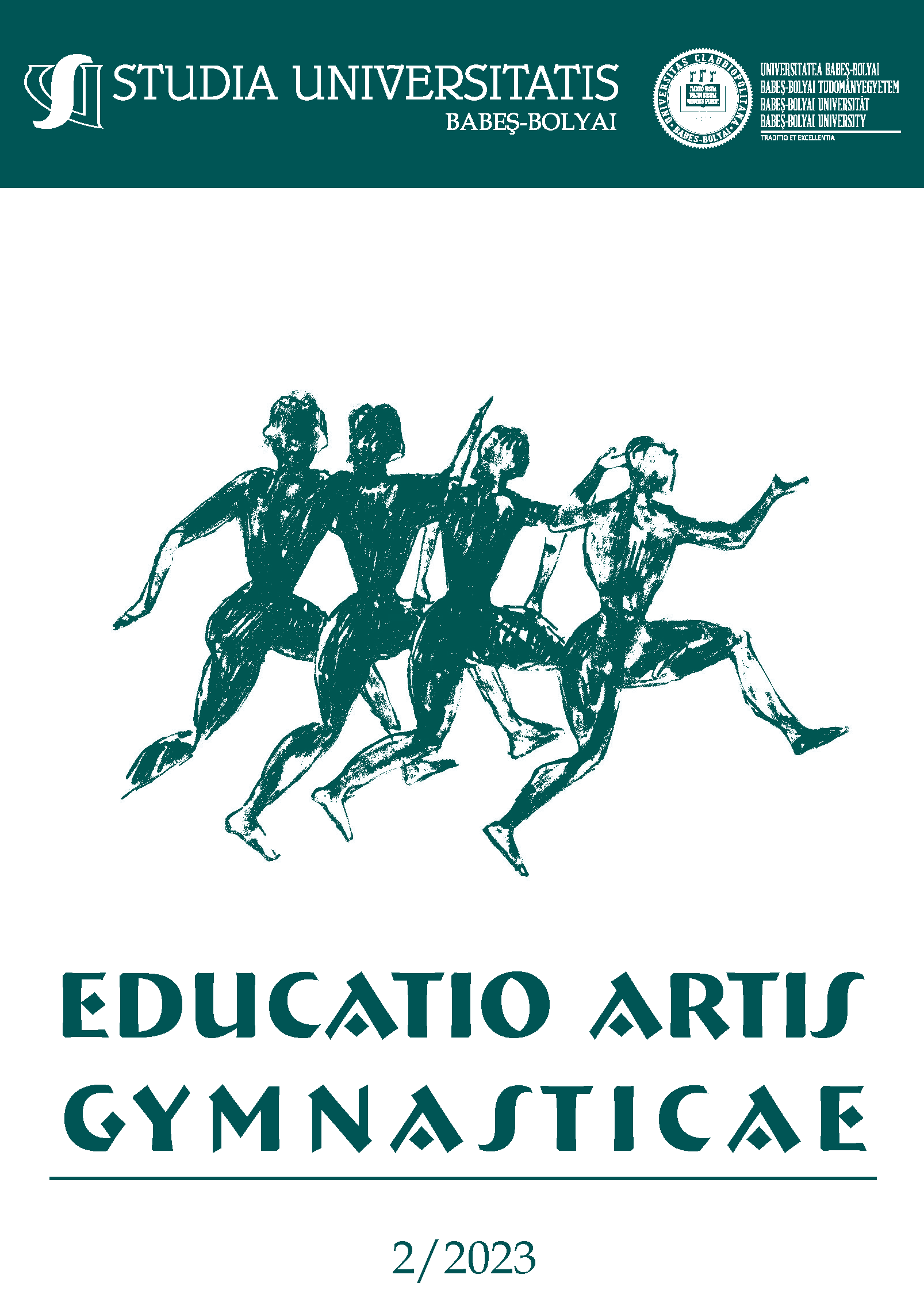RELATIONSHIP BETWEEN STRENGTH/POWER AND DYNAMIC BALANCE IN 1ST-YEAR UNDERGRADUATE STUDENTS – PILOT STUDY
DOI:
https://doi.org/10.24193/subbeag.68(2).14Keywords:
strength/power, dynamic balance, balance boardAbstract
Aim: Examine the relationship between lower limb strength/power and dynamic balance, and whether lower limb strength differences influence balance. Methods: 85 subjects (mean age 20.14, ±0.44) - female (n=63) and male (n=22) 1st-year undergraduate students - participated in this study. Standing long jump and single leg triple hop jump tests were used to determine strength/power, and balance board was used to determine balance. Results: The statistical analysis has revealed no statistically significant correlation between lower limb strength and the average time on balance board after three essays (r = 0.102, df = 83, p = 0.35). As for the relationship between the difference in the scores of the three successive single leg hop jumps and the average time on balance board after three essays, no statistically significant correlation has been found in this case either (r = 0.136, df = 83, p = 0.21). The average score of hop jumps on right leg is (M = 412.54 cm) and the average score of hop jumps on left leg is (M = 403.07 cm); according to the statistical analysis, they differ significantly (t = 2.227, df = 84, p = 0.029). There is a significant difference (t = - 2.625, df = 84, p = 0.01) between the average time on balance board after the first essay (M = 24. 77) and the average time on balance board after the third essay (M = 27.21). Conclusions: In this study, the statistical analysis has revealed no statistically significant correlation between lower limb strength/power and balance. No statistically significant correlation has been found between lower limb strength difference and balance either. Balance board is important in balance development, as shown by the average scores of the three essays (M1 = 24.77, M2 = 26.52, M3 = 27.21).
Received 2023 May 11; Revised 2023 July 9; Accepted 2023 July 10;
Available online 2023 July 30; Available print 2023 August 30.
References
Barrera-Domínguez, F. J., Carmona-Gómez, A., Tornero-Quiñones, I., Sáez-Padilla, J., Sierra-Robles, Á., & Molina-López, J. (2021). Influence of Dynamic Balance on Jumping-Based Asymmetries in Team Sport: A between-Sports Comparison in Basketball and Handball Athletes. International journal of environmental research and public health, 18(4), 1866. https://doi.org/10.3390/ijerph18041866
Bhat, R., & Jamal, A. M. (2013). Comparison of dynamic balance in collegiate field hockey and football players using star excursion balance test. Asian Journal of Sports Medicine, 4(3), 221-n/a. Retrieved from https://www.proquest.com/scholarly- journals/comparison-dynamic-balance-collegiate-field/docview/1460124956/se-2
Gürkan, A. C., Demirel, H., Demir, M., Atmaca, E. S., Bozöyük, G., & Dane, S. (2016). Effects of long‐term training program on static and dynamic balance in young subjects. Clinical and Investigative Medicine (Online), 39(6), S31‐S33. Retrieved from https://search‐proquest‐com.am.e‐nformation.ro/docview/1848748499?accountid=136549
Hammami, Raouf & Chaouachi, Anis & Makhlouf, Issam & Granacher, Urs & Behm, David. (2016). Associations Between Balance and Muscle Strength, Power Performance in Male Youth Athletes of Different Maturity Status. Pediatric exercise science. 28. 10.1123/pes.2015-0231.
Muehlbauer, Thomas & Besemer, Carmen & Wehrle, Anja & Gollhofer, Albert & Granacher, Urs. (2012). Relationship between Strength, Power and Balance Performance in Seniors. Gerontology. 58. 10.1159/000341614.
Muehlbauer, T., Gollhofer, A., & Granacher, U. (2015). Associations between measures of balance and lower-extremity muscle Strength/Power in healthy individuals across the lifespan: A systematic review and meta-analysis.Sports Medicine, 45(12), 1671-1692. doi: https://doi.org/10.1007/s40279-015-0390-z
Downloads
Published
How to Cite
Issue
Section
License
Copyright (c) 2023 Studia Universitatis Babeș-Bolyai Educatio Artis Gymnasticae

This work is licensed under a Creative Commons Attribution-NonCommercial-NoDerivatives 4.0 International License.






